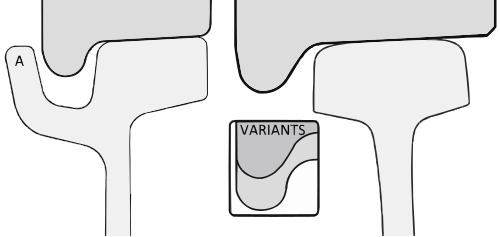Are there any bus routes that use the HOV tunnel in question, or is it moot because it bypasses SS?
Logan express braintree. And probably sometimes LE back bay - they do some experimenting with routing at rush hour. That's about it.
Are there any bus routes that use the HOV tunnel in question, or is it moot because it bypasses SS?
At least the I-84 HOV lanes will see imminent use being incorporated into ctfastrak, extending the service for far cheaper than the New Britain Busway boondoggle.
And I do admit I've found them useful traveling between school in Worcester and home in CT (not a regular commute, mind you) when we happen to run through metro Hartford at rush hour, and have been far from the only ones using the HOV lane.
Are there any bus routes that use the HOV tunnel in question, or is it moot because it bypasses SS?
Logan express braintree. And probably sometimes LE back bay - they do some experimenting with routing at rush hour. That's about it.
^ I think your pessimism is misguided in this case. Google it - every year there is a Globe article about how little these HOV lanes are ever used.
The Globe is not exactly known for their transportation expertise. The press corp in general goes nuts for stories about "empty buses" and "empty bus lanes" and "empty HOV lanes." Take it with a huge grain of salt.
Remember, it's all a form of the "empty lanes attack" used by drivers to destroy facilities like bus lanes and HOV lanes in favor of more asphalt for single-person vehicles.
An HOV lane or a bus lane (or a rail track) should look empty most of the time. Otherwise it's not going to be a reliable alternative. An HOV lane can tolerate denser traffic perhaps, but it's still going to "look empty" to angry crusading drivers and their enablers in the press no matter what.
And if it doesn't "look empty" it's because the HOV lane is just as locked up and bogged down as everyone else -- a failure.
I wonder if this particular HOV lane isn't used because navigation apps don't tell people to use it. I've been in taxis and Ubers many times going to the airport and they don't even know about this lane. They always follow their GPS to the regular lanes, which from downtown and the South End have different ramps at different intersections than the HOV lane.
I would rather see the existing Silverline tunnel converted to light rail or even heavy rail, and then the I-90 HOV tunnel used for the SS to Logan and Chelsea "Silver Line" bus routes (plus other HOV traffic and buses).
The existing Silver Line tunnel is already set up for rapid transit ready stations, and the HOV tunnel is already set up for buses.
I would rather see the existing Silverline tunnel converted to light rail or even heavy rail, and then the I-90 HOV tunnel used for the SS to Logan and Chelsea "Silver Line" bus routes (plus other HOV traffic and buses).
The existing Silver Line tunnel is already set up for rapid transit ready stations, and the HOV tunnel is already set up for buses.
I'd have to assume there's much greater bang-for-buck going Charles/MGH - Kenmore - West Station - Harvard (with intermediate stops of course), and re-routing the B line eastbound onto the GJ through Cambridge (as Davem, I believe, showed on one of his maps). That's both cost-effective for the Blue, and gives Cambridge, in addition to Allston, all sorts of new transit lines.
*...Of course, that all depends on NSRL, doesn't it...
Yes, NSRL let's you convert Grand Junction to a green line branch all the way over to West Station. Neither of which should be in crazy transit pitches. Being able to turn GJ into a green line branch would be THE best reason to do NSRL in my mind.
Sorry if I missed this, but couldn't the FRA permit a deal similar to NJ River Line's time-of-day separation to mix CR/Freight/FRA Rule trains and Light Rail?
Would it be possible to keep a single mainline track (perhaps a gauntlet between the GL tracks) and only do equipment / maintenance moves with time separation?
Awhile back on here I had read that tracks are slightly different for light rail vs. FRA railroad. I think F-line had said that.

Here's what I think the link between the Fitchburg/north side and Worcester/south side between Brandeis/Roberts and Auburndale should look like.
Casualties:
slivers of two parking lots
2 or 3 houses

